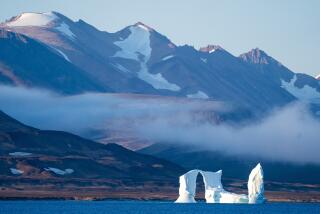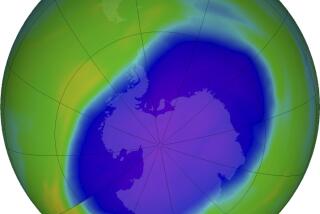Science / Medicine : Thinning of Ozone Layer Also Found Over Arctic
- Share via
Scientists who have been analyzing data from a series of 14 flights over the North Pole by instrument-laden aircraft have concluded what many had feared: that the ozone layer over the Arctic is thinning, although not nearly as severely as over Antarctica.
The scientists reported in last week’s issue of Nature that ozone depletion ranged from 12% to 35% within the north polar region, and they suggested that man’s release of chlorofluorocarbons has caused the loss.
The measurements were made in January and February, 1989, from a converted U-2 spy plane operated by the National Aeronautics and Space Administration. Shortly after the flights, scientists reported that they had detected man-made pollutants in the upper atmosphere over the Arctic, but the data at that time did not show whether the ozone layer was being depleted. Ozone protects the Earth from potentially lethal ultraviolet radiation.
Although a seasonal “ozone hole” over Antarctica has been well documented, the seriousness of the problem at northern latitudes is more difficult to determine because it is masked by winds that carry ozone-rich air into the Arctic region, according to Michael Proffitt of the University of Colorado, principal author of the study.
“The Arctic is not likely to ever see the precipitous decline in ozone found in the Antarctic” because of differences in weather patterns, Proffitt said. “What we have found is certainly not an ozone hole in the sense of what we found in the Antarctic.”
Still, it is cause for concern among experts who fear that depletion of the ozone layer could increase the danger on the ground from radiation from space.





